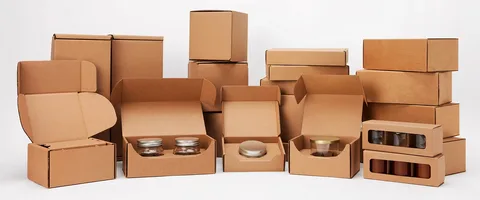Shipping seafood requires packaging that can withstand moisture, cold temperatures, and long transit times without compromising product quality. That’s why industry professionals rely on wax shipping boxes for seafood—a proven, cost-effective packaging solution that preserves freshness and ensures safe delivery.
Whether you’re handling freshly caught fish, frozen shrimp, or shellfish packed on ice, wax-coated boxes provide the durability and food safety features that traditional cardboard simply can’t match.
What Are Wax Shipping Boxes for Seafood?
Wax shipping boxes for seafood are corrugated cardboard containers coated with a layer of wax—typically paraffin or polyethylene—that prevents moisture penetration. This coating ensures that the box maintains its structural integrity even when exposed to wet conditions, melting ice, or refrigeration.
These boxes are used throughout the seafood supply chain—from fishers and processors to distributors and retailers—because they meet the industry’s strict hygiene and handling requirements.
Why Use Wax-Coated Boxes for Seafood Shipping?
✅ Water and Ice Resistance
Seafood is often shipped with ice or in damp conditions. The wax coating prevents the box from absorbing moisture, avoiding disintegration or leaks during transport.
✅ Structural Durability
Even under refrigeration or when stacked during shipping, wax boxes hold their shape and strength far better than untreated cardboard.
✅ Food-Safe Material
Many wax-coated boxes are made with FDA-compliant coatings, making them safe for direct or indirect contact with raw seafood.
✅ Leak Prevention
The wax barrier minimizes the risk of leakage from seafood juices or melting ice—critical for hygiene and cleanliness during transit.
✅ Cold Chain Compatibility
Wax shipping boxes are ideal for cold chain logistics, maintaining performance in freezers, refrigerated trucks, and coolers.
Types of Seafood Commonly Packed in Wax Boxes
-
Whole and filleted fish (e.g., salmon, cod, tuna)
-
Shellfish (e.g., shrimp, crab, lobster)
-
Bivalves (e.g., mussels, clams, oysters)
-
Frozen seafood products
-
Vacuum-packed seafood portions
Popular Wax Box Options for Seafood
1. Fully Wax-Coated Boxes
Coated both inside and outside, these boxes are perfect for wet or ice-packed seafood and long-haul shipments.
2. Spot Wax-Coated Boxes
Only the interior or bottom is waxed, offering moisture protection with a lower material cost—ideal for dry-pack or less perishable items.
3. Poly-Coated Seafood Boxes
Use polyethylene instead of wax for moisture protection and may offer easier recycling.
4. Custom Seafood Boxes
Tailored with vents, drain holes, or special compartments for improved handling and preservation.
Sustainability Considerations
Traditional wax shipping boxes can be difficult to recycle due to the wax barrier. However, repulpable wax boxes and poly-coated recyclable options are emerging as eco-friendly alternatives. Businesses looking to reduce their environmental footprint should ask suppliers about sustainable box options.
Tips for Effective Use
-
Use liners or absorbent pads to prevent contamination.
-
Label clearly with product info, origin, and handling instructions.
-
Store in dry areas before use to maintain box strength.
-
Avoid overfilling to prevent bulging or collapse during transport.
Final Thoughts
Shipping boxes for seafood are an indispensable part of the modern seafood industry. Their moisture resistance, strength, and food safety compliance make them ideal for transporting fresh or frozen seafood over long distances. From dock to destination, these boxes ensure that your seafood arrives in premium condition—clean, cold, and leak-free.
